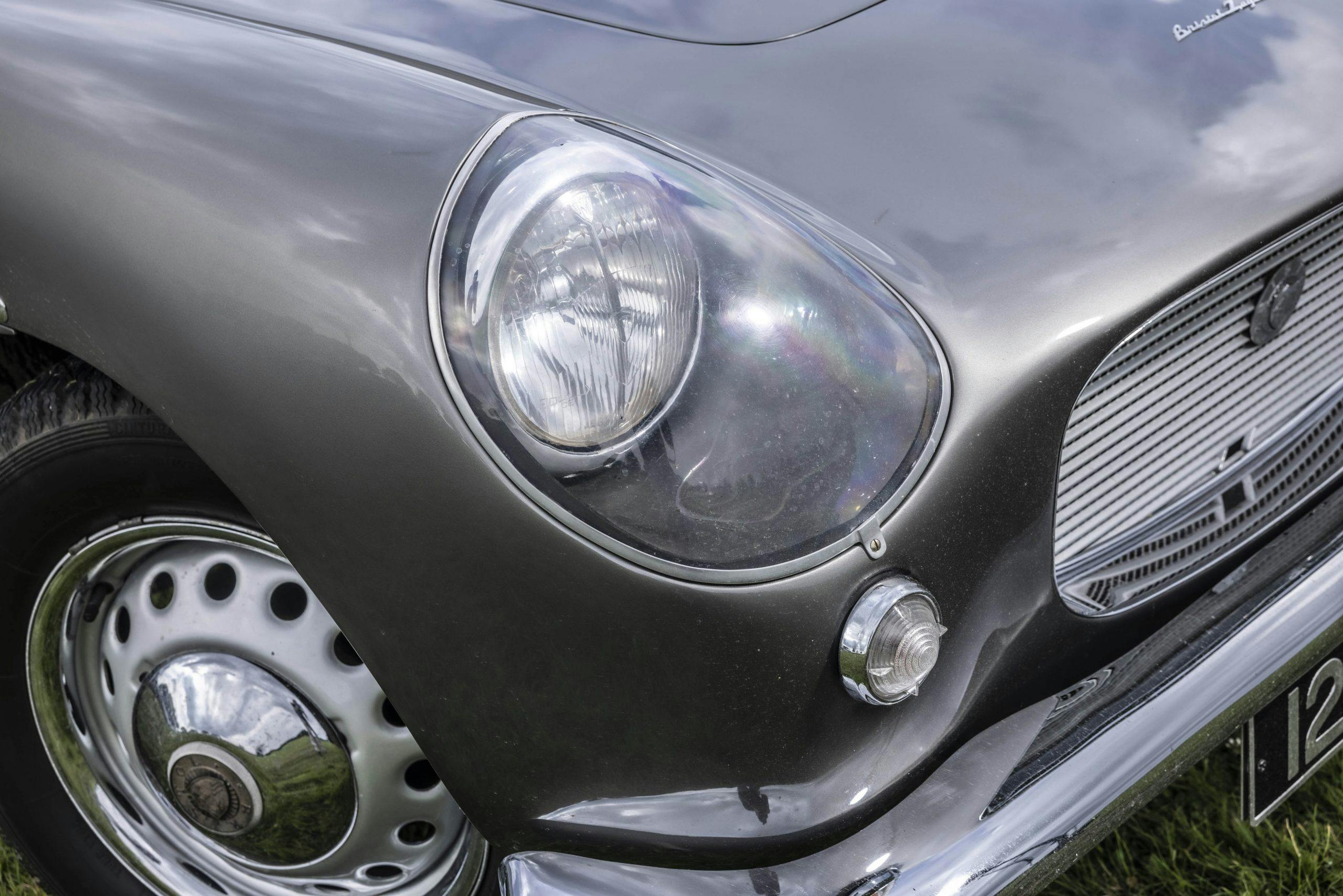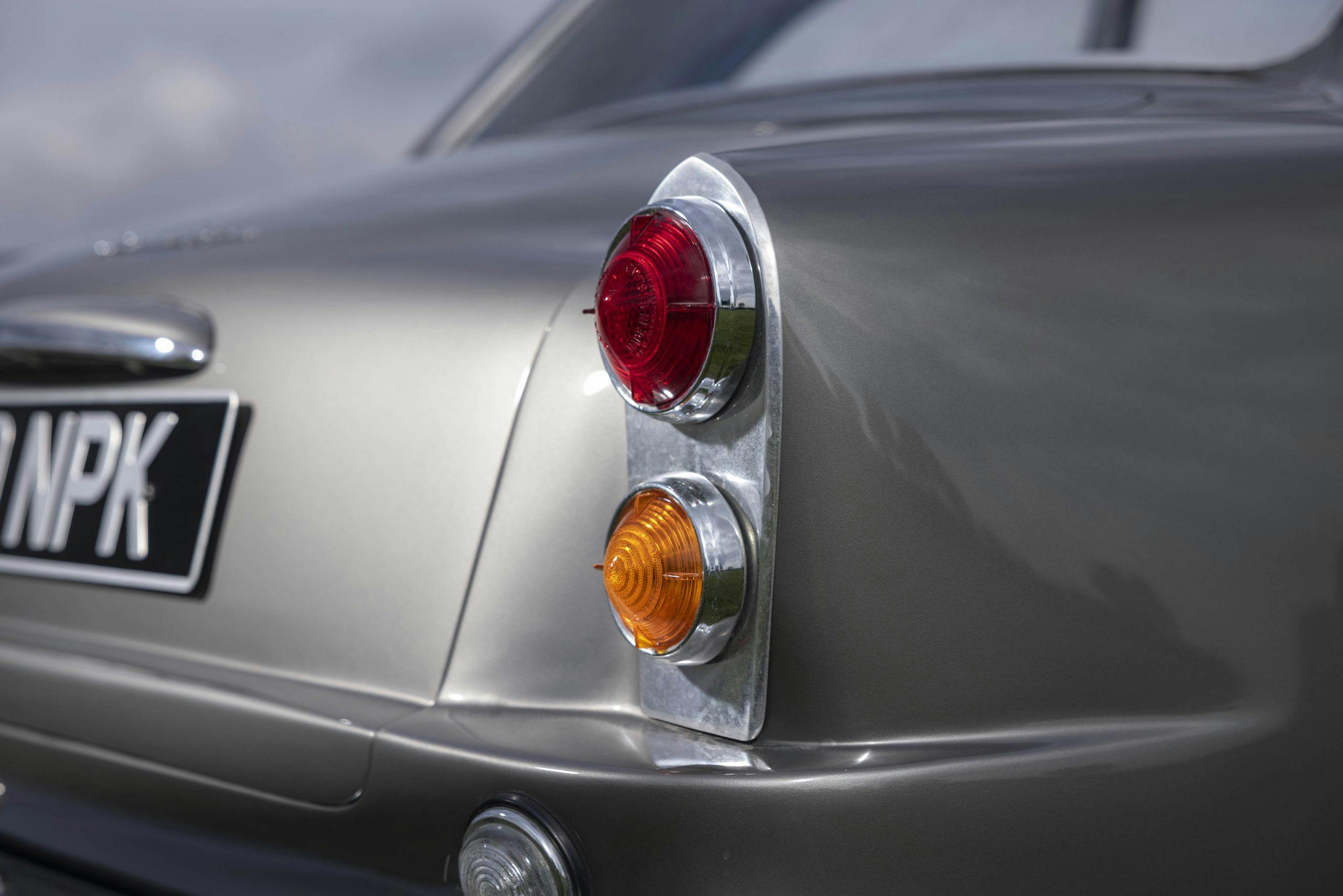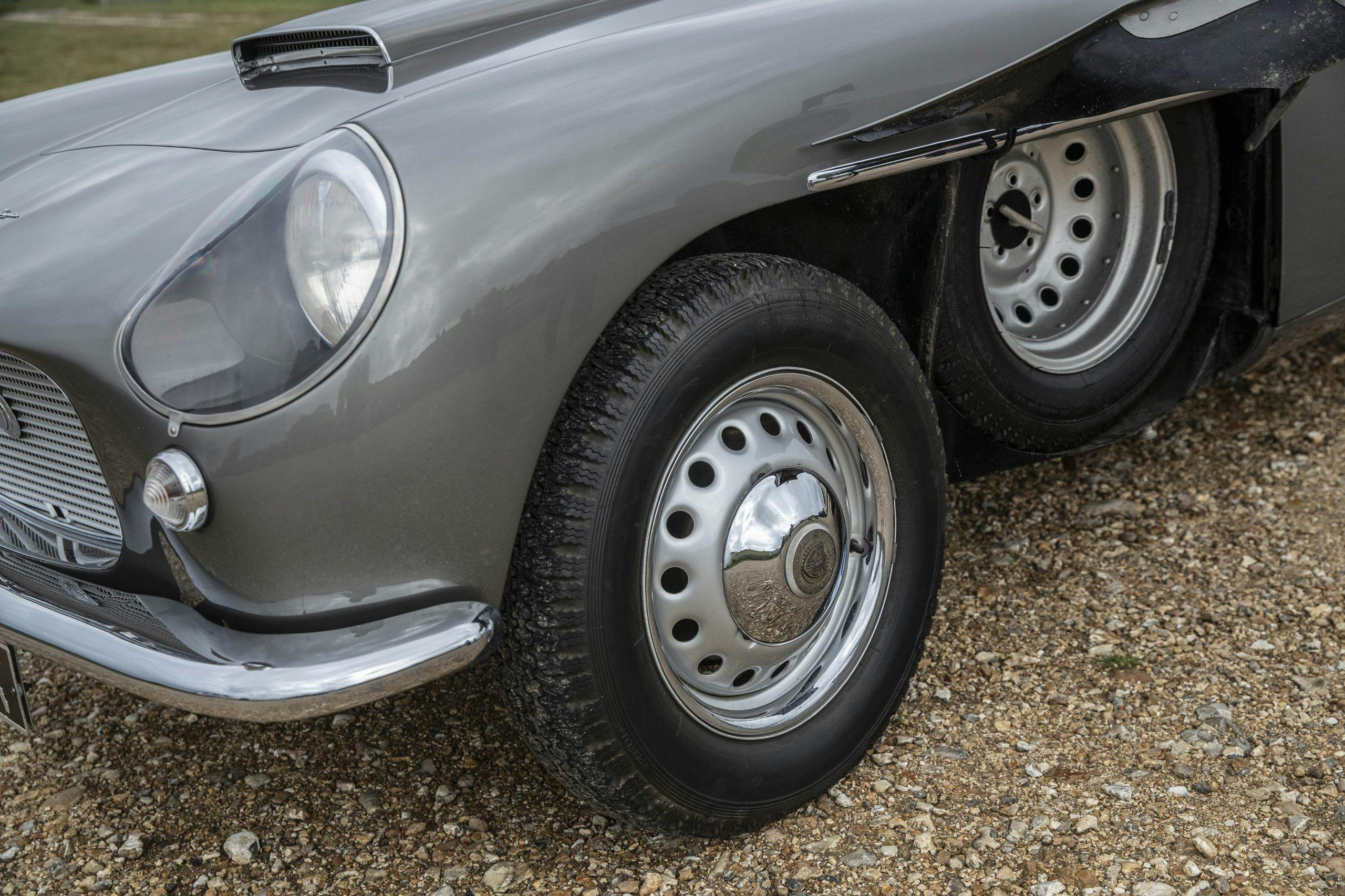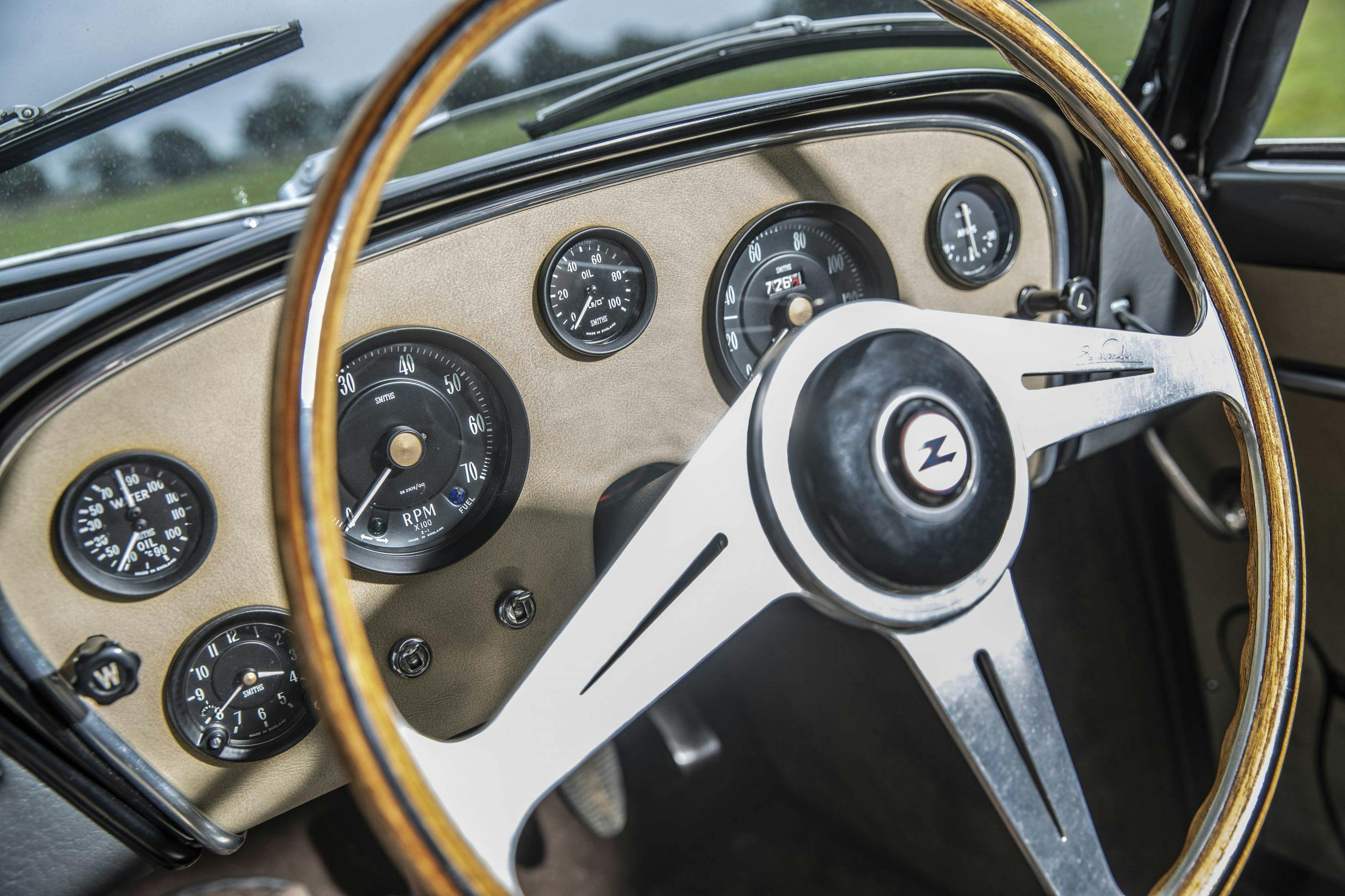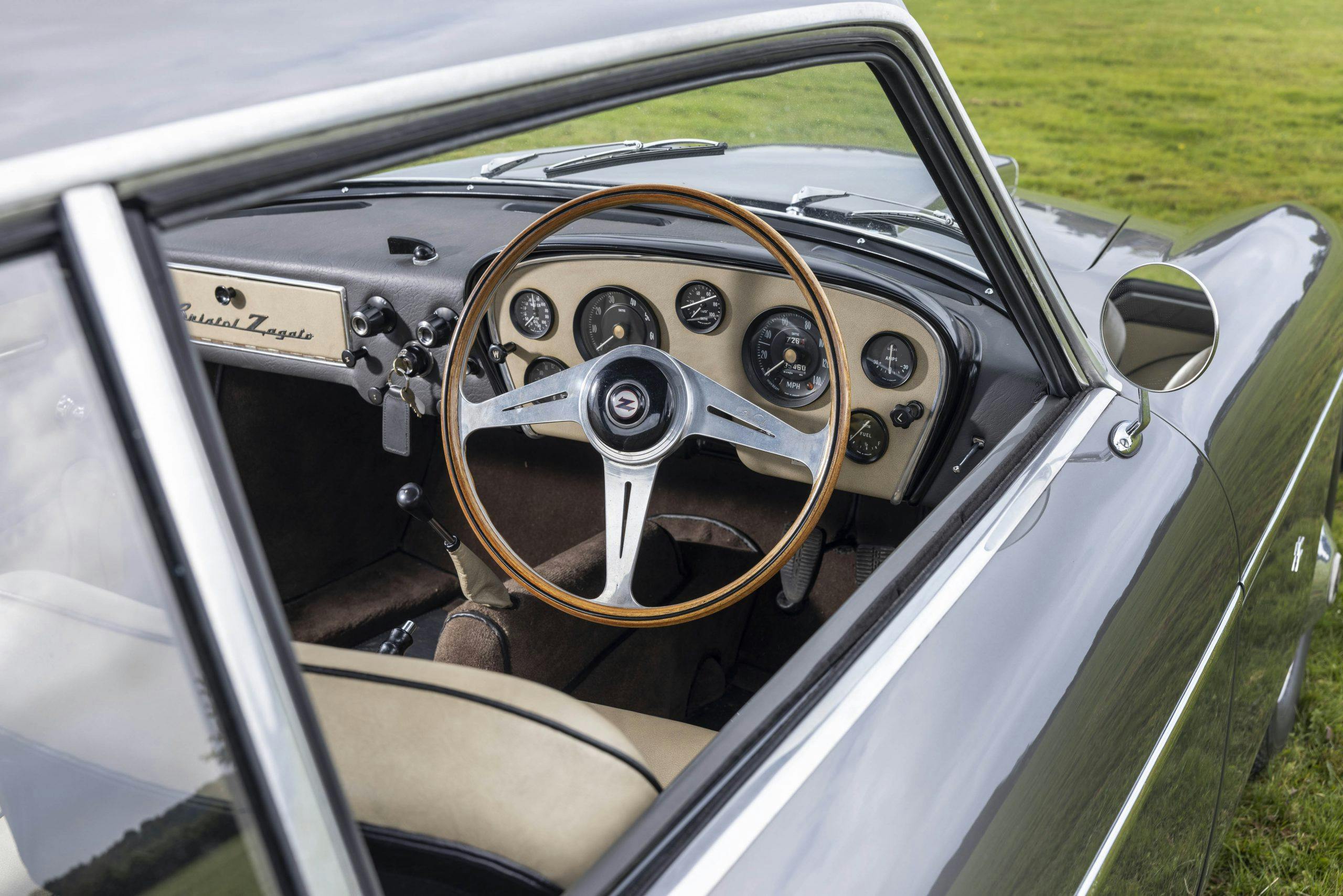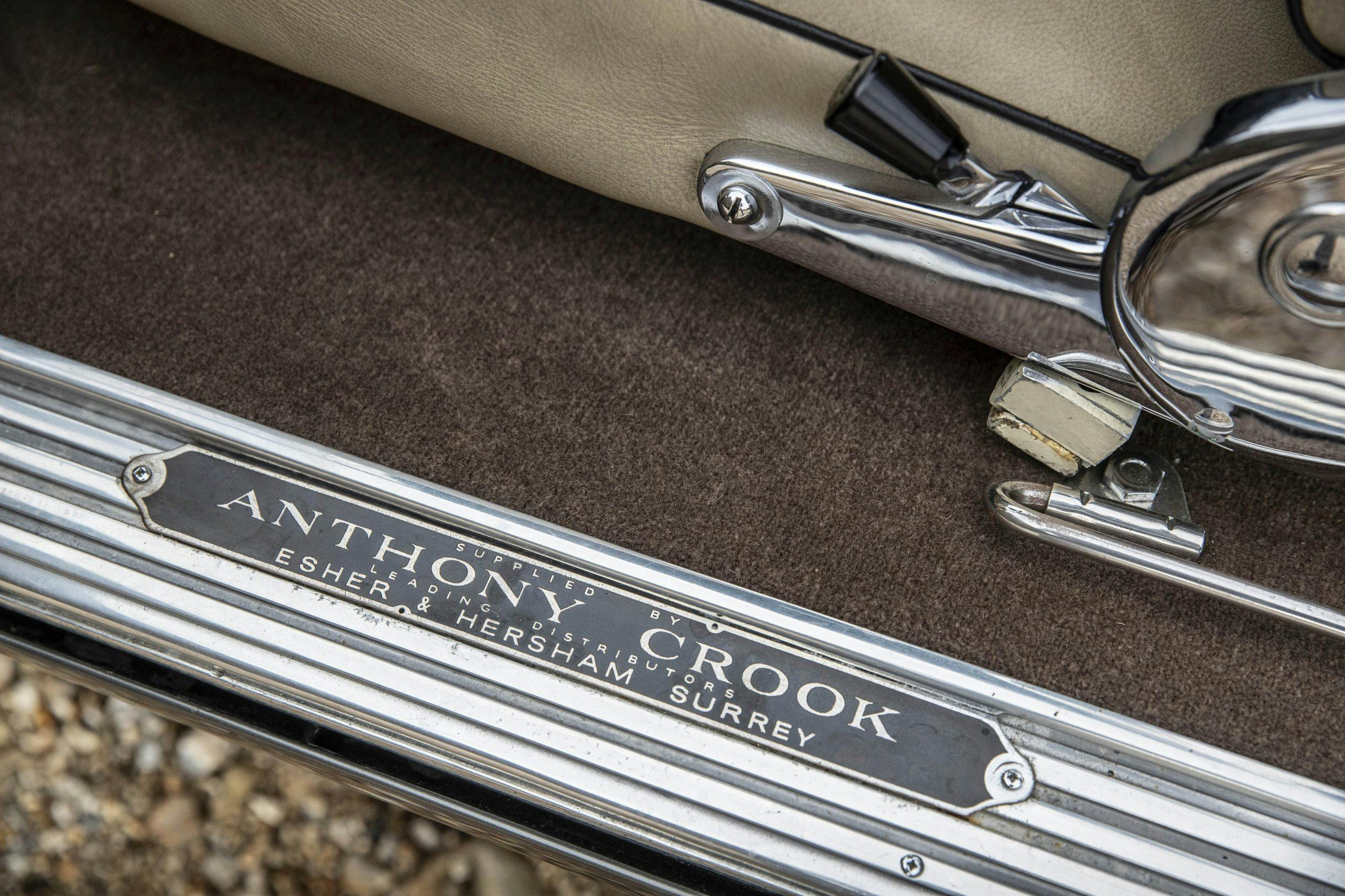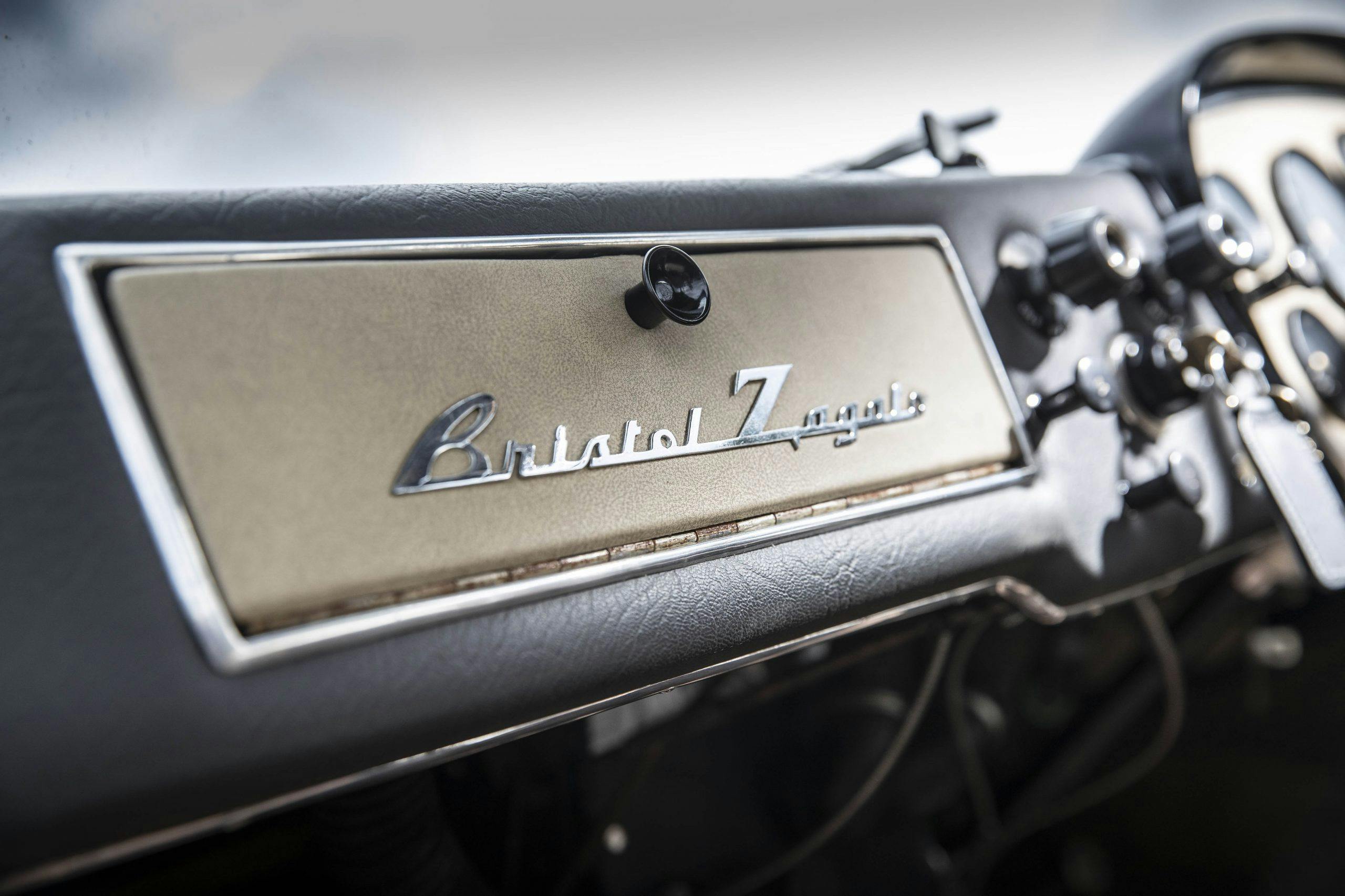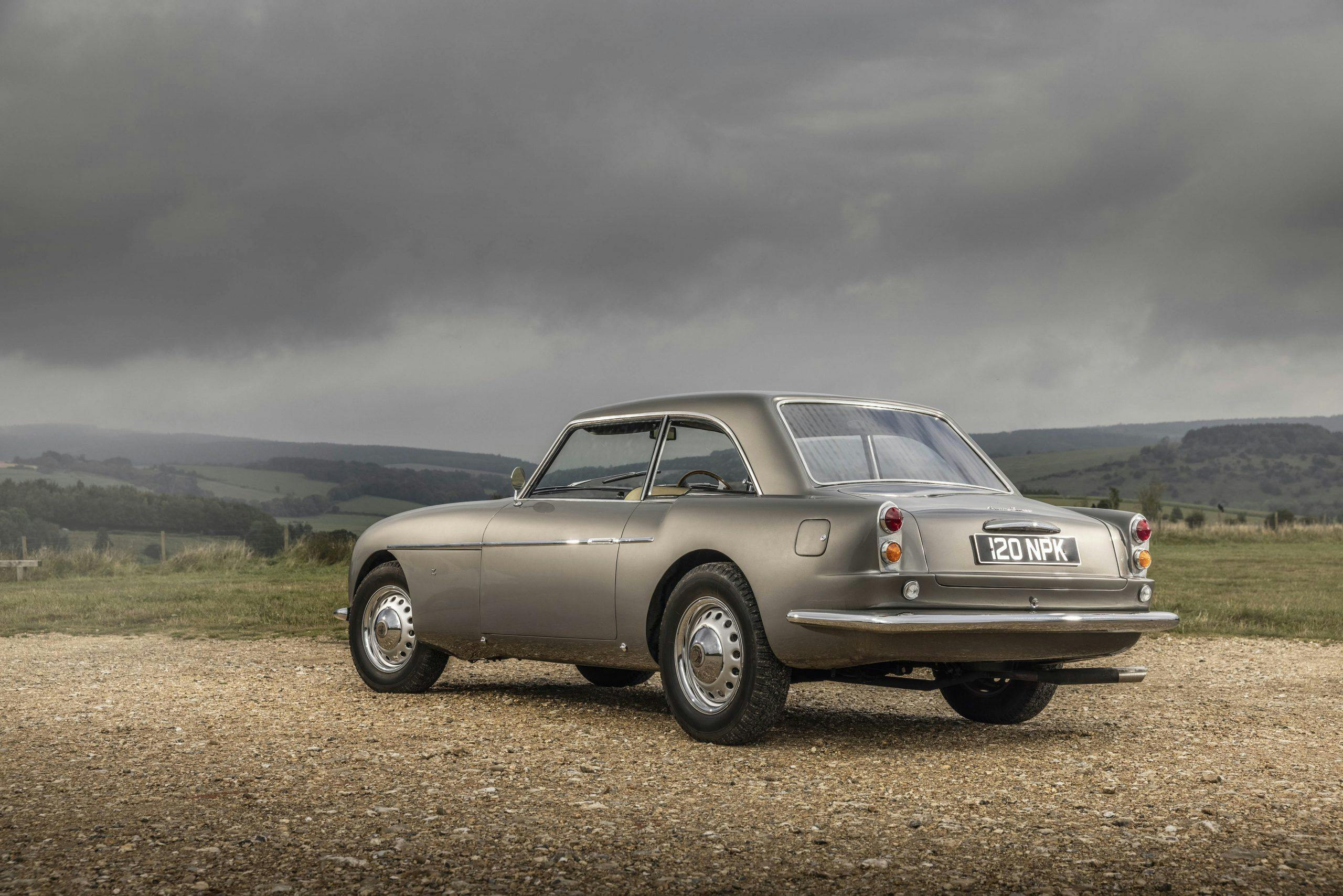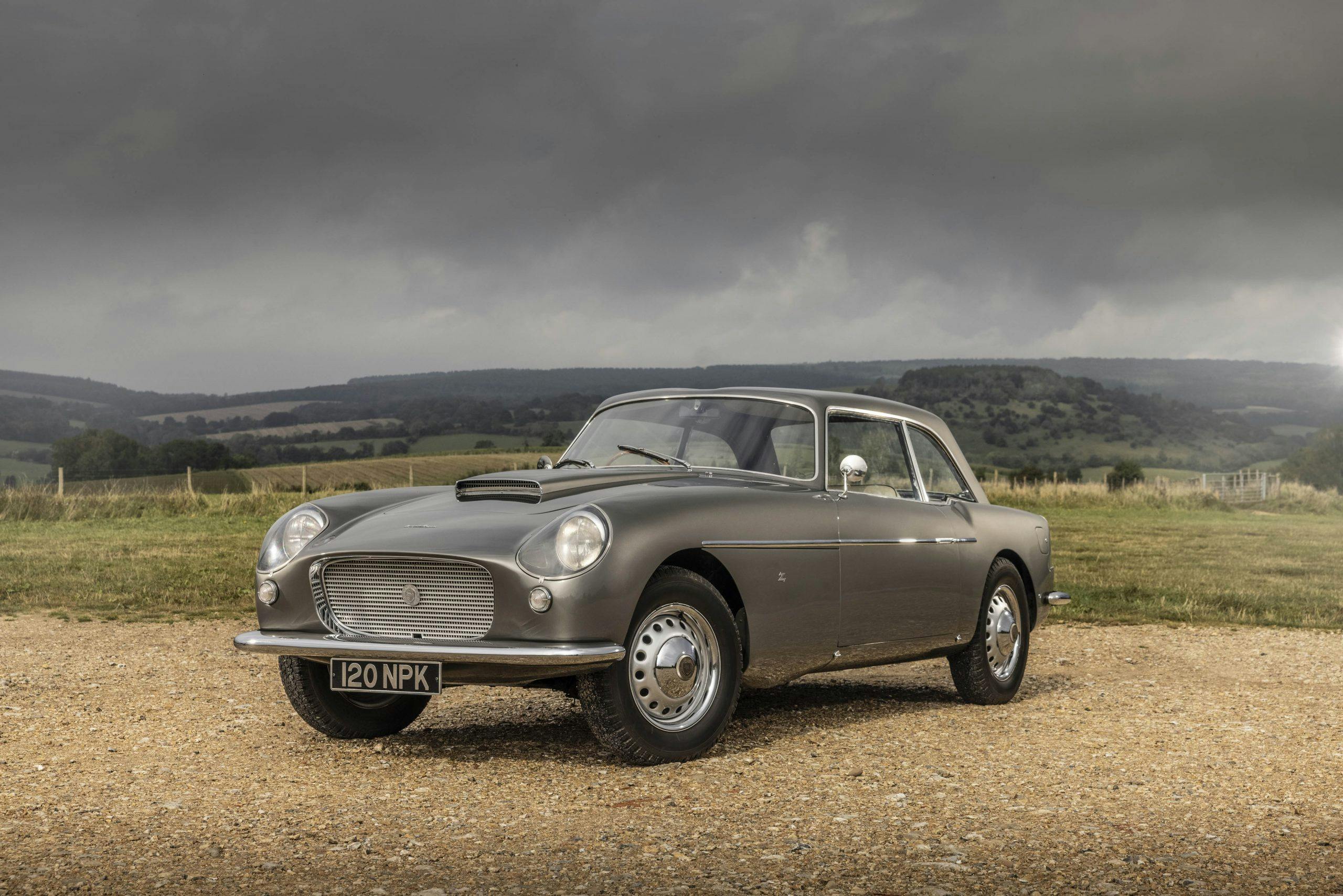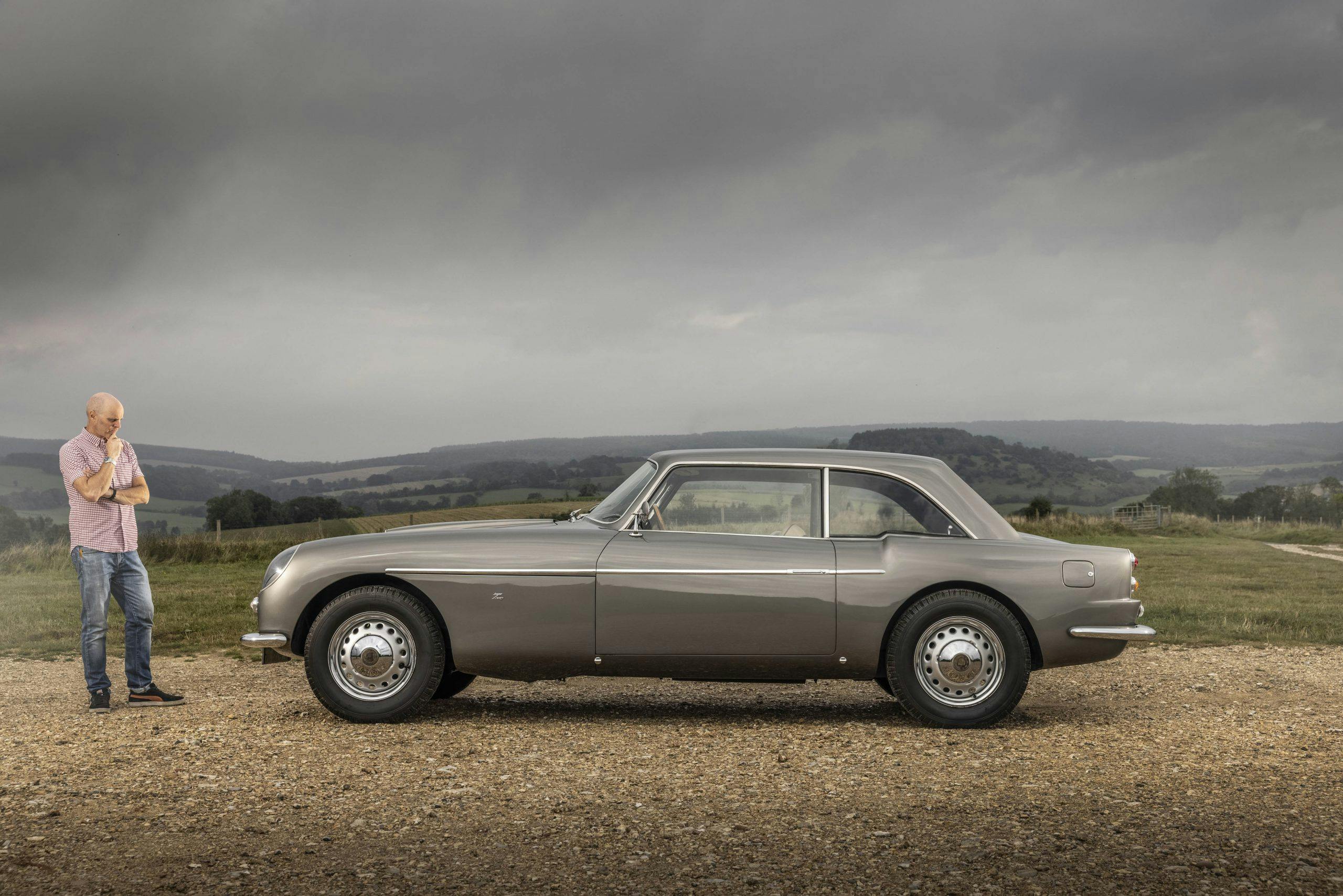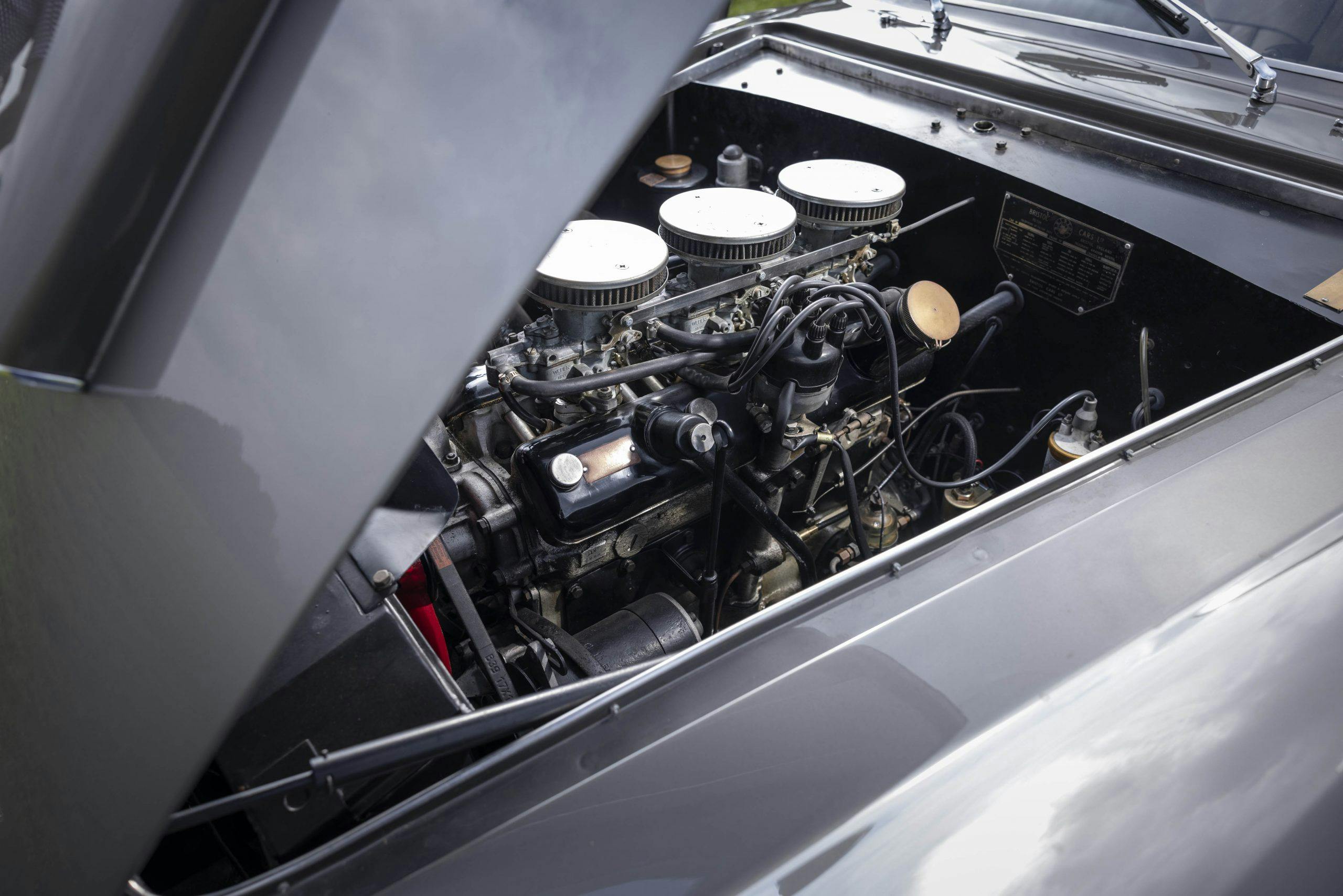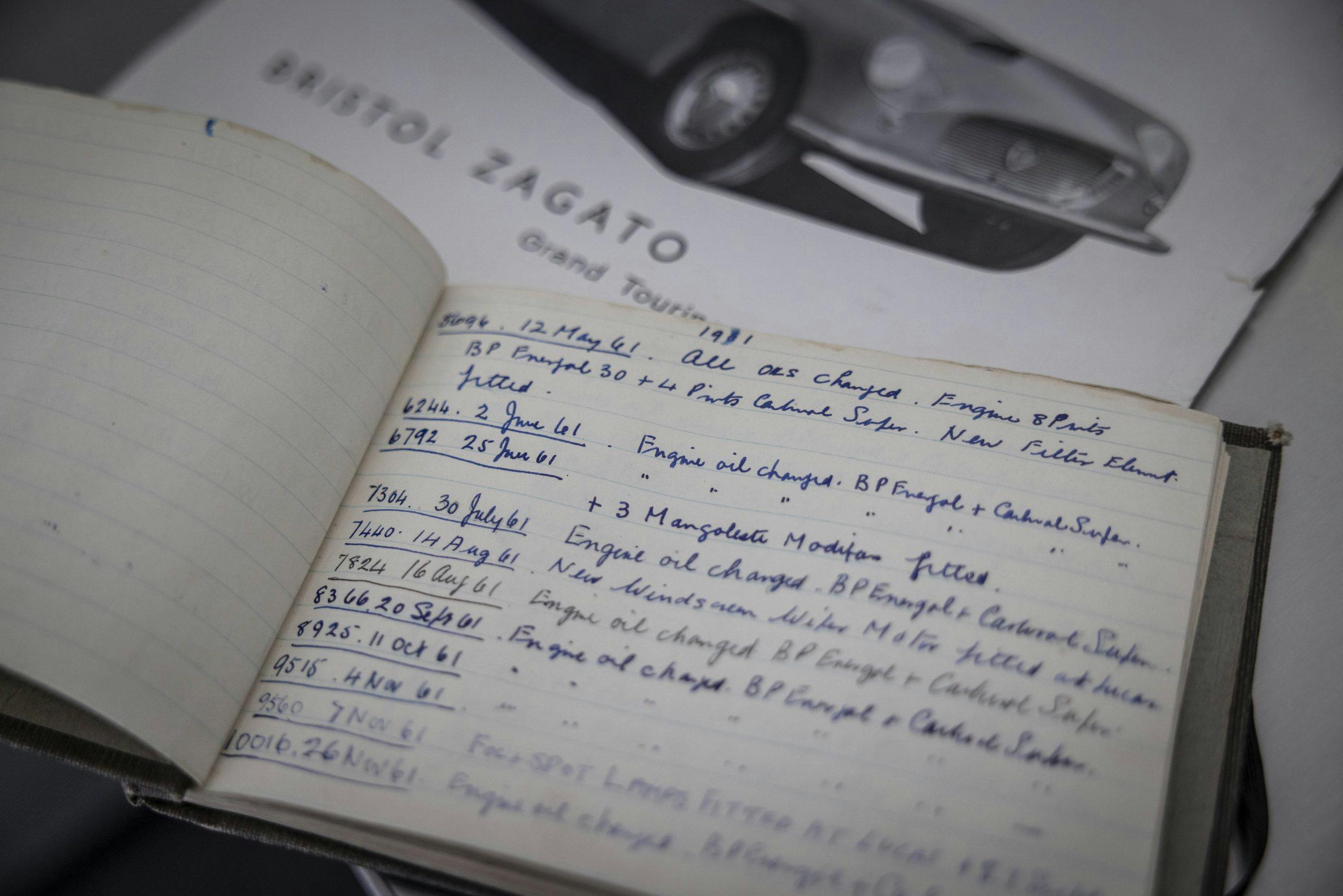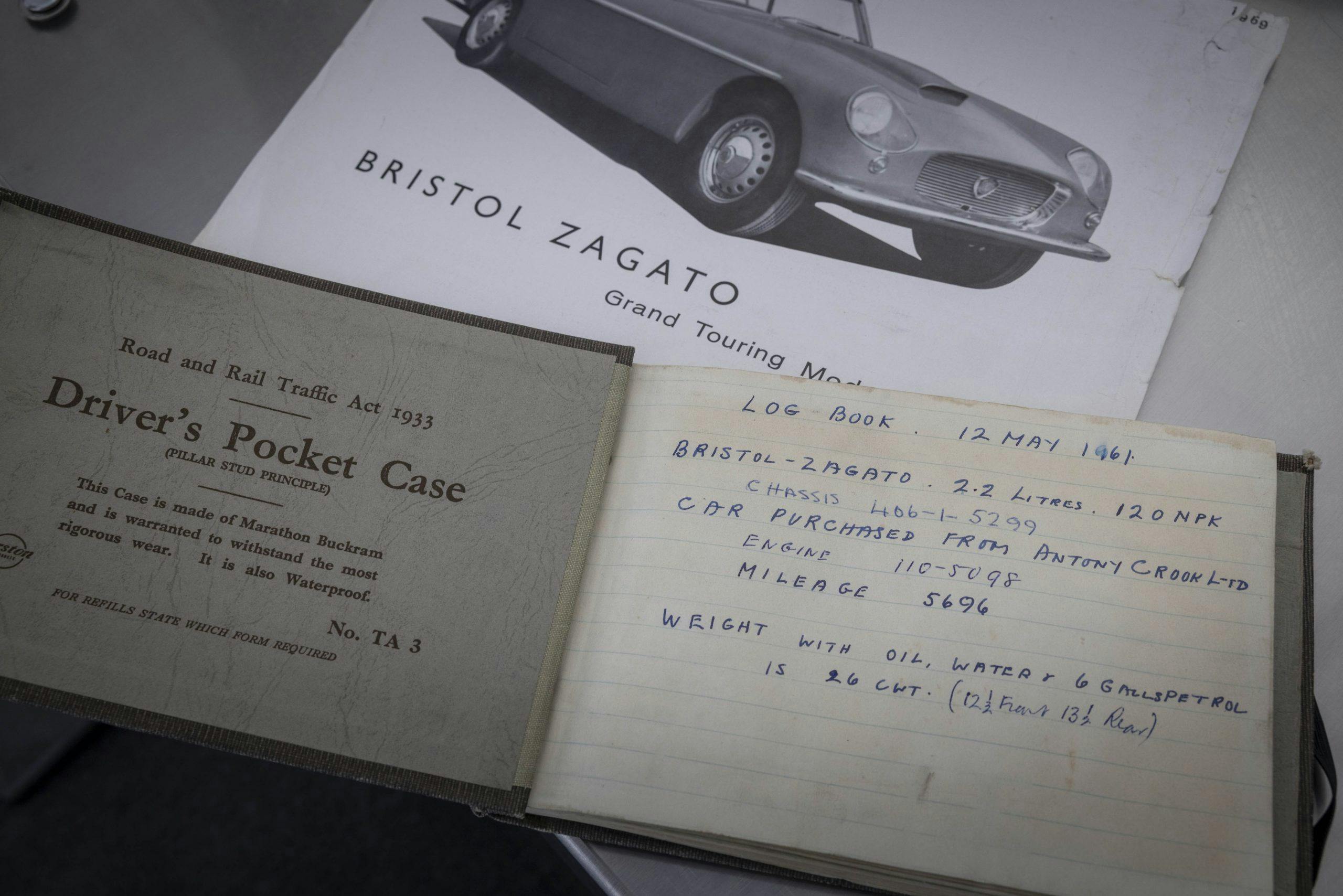Bristol 406 Zagato: Aston DB4 GT who?

If you thought Aston Martin DB4 GT Zagatos were rare, this Zagato-bodied Bristol 406 from 1960 takes scarcity to another level. The car that’s sitting in front of us with its six-cylinder engine thrumming away steadily really is a chance for one lucky person to own a slice of Bristol Cars’ history. With only six built, the Bristol makes the 20 Aston Martin DB4 GT Zagatos of the same period look rather … commonplace. Should one come to market, you could expect to pay as much as £8 million ($11M).
The 1960 406 sports saloon with Carrozzeria Zagato bodywork is up for auction at the Bonhams Goodwood Revival Sale on 18 September, with a reserve price from £140,000 (just under $194,000). By most standards that’s a lot of money for a car, even if it seems a steal compared to the Aston. But in many ways, the price doesn’t reflect either the rarity or significance of this Bristol.
Make no mistake, this Zagato-bodied Bristol appears as, if not more special than the Aston. The original Dudley Hobbs designed 406 sets the standard for the subsequent 25 years of Bristol products but there’s no doubting this Zagato model is the sportier younger brother.

There are the Perspex bubbles covering the headlights, a squared-off and purposeful air scoop to accommodate the triple carburetors sitting on top of that 2.2-liter engine, and a shoulder line kink that kicks up ahead of the rear wheel arch, not dissimilar to the Aston’s. Being a Zagato there are the double bubbles on the roof, squared off to ape the bonnet scoop, and instead of traditional wing mirrors this model has them on the doors.
Where the original 406 looks rather lumpen from the rear, this 406 is delicately resolved, like Lancia or Ferrari grand tourers of the era. It stands 11 inches (28 cm) shorter than a regular 406 with a good few of those removed by truncating the tail. While this might sacrifice boot space, the overall appearance of the car doubtless benefits.
Is it a good-looking car? Perhaps not in the traditional sense. Sitting on 19-inch wheels it doesn’t look as “overbodied” as the regular Bristol 406. But it nevertheless retains Bristol character and with a roof five inches (13 cm) nearer the road, it’s significantly more elegant than the regular 406, at least to my eyes.
What my eyes can’t see (but what the shape suggests) is that this model’s bodywork is lighter. Zagato removed a healthy 574 pounds (260 kg) compared with the regular model so this 406 tips the scales at 2436 pounds (1104 kg).
Saving that weight through alloy panels over its steel frame would, as it turns out, be the future of Bristol cars, carrying over into the subsequent 407. But then in many ways this car represents a landmark in the company’s history. For a start, in 1959 it was actually commissioned from Zagato by Anthony Crook, then Bristol’s London dealer. Evidence of this resides in the chrome scuff plates in the door sills, reading Anthony Crook Motors Limited, instead of Bristol Cars as you might expect.
At the time, Crook was in the process of separating Bristol Cars entirely from its parent Bristol Aeroplane Company so that he could take it over. In the publicity he stated:
“The lightweight two-door coachwork has been built to the requirements of Anthony Crook Motors Limited by Zagato of Milan, Italy … The emphasis has been placed on providing extra speed without impairing reliability or flexibility and whilst still retaining reasonable rear seat accommodation—a feature normally lacking in Grand Touring saloons.”
According to Paul Darvill from Bonhams, Crook had asked Zagato to design a car where two people could wear hats while sitting in the back seat. We can confirm there is room to wear a hat, although for a six-footer it would have to be a flat cap. There is however plenty of leg room in the rear thanks to the sculpted seat backs of the front seats. Although the floor is high, meaning your knees are at chest level and stretching your legs out isn’t an option. Still, there is a sumptuous looking arm rest to accommodate the ashtray.
The front seats are definitely the ones to have in this car. Clad in cream leather with black piping they’re soft and not particularly supportive. But bearing in mind this is a 60-year old design, they’re not uncomfortable. And the driving position is excellent.
Obviously there’s no steering wheel adjustment but I can sit with my legs comfortably stretched out, arms slightly bent on the wooden-rimmed wheel.

The gear lever, a spindly affair sitting atop what looks like an afterthought extension to the transmission tunnel, is positioned slightly too far forward for my taste. And there’s nowhere to rest arms for either driver or passenger. But this was built for the days when driving demanded both hands on the wheel.
Speaking of which, the rack and pinion steering has no assistance so it’s heavy at parking speeds, particularly so given the size of the wheels. But once you get going, the weight piles off and it becomes nicely responsive, communicative even.
Responsiveness isn’t one of the engine’s best traits. This model is the last of the six-cylinder Bristols, using a final iteration of the BMW-derived 2.0-liter. Revised and enlarged to 2.2-liters it has 130 horses—less than half the power of Aston’s later DB4 GT Zagato. Torque is estimated at 147 lb-ft at 3000rpm and it’s fair to say the Bristol runs out of beans swiftly.
That’s not a problem, though. Once you’ve adapted to the short-travel, on-off nature of the clutch, the four-speed gearbox is short of throw and precise in its action. The gate, too, is tight enough to make concentration necessary if you’re want to avoid selecting reverse when you want first. That minor concern aside, gear ratios are nicely matched to the speed. The trouble is by the time you’ve got to 45 mph, you’ve run out of gears. Thankfully there’s self-cancelling overdrive, accessed through a lovely long switch on the dashboard.
That lack of gears might lead the engine sound to become quite intrusive if it wasn’t so gorgeous. The small capacity six cylinder makes it throaty and smooth at the same time with a lovely tone it would take a few hours to tire of. But that’s what long lunches and regular cups of tea are for …

Bristol had probably clocked that the engine was the weak link for a grand tourer, so the 407 featured a 5.0-liter Chrysler V-8.
If going is spirited rather than stirring, there would have been no problem with stopping at the time. Unusually for cars of the period, this 406 features Dunlop disc brakes all around. By today’s standards the solid pedal doesn’t inspire confidence, but everything’s relative.
Another curiosity that places the 406 ahead of its time is its flush-fitting door handles. These sit towards the rear of the chrome strip that starts at the rear of the front wheels. Push a button and the slim handle pops out. You then pull on this to release the door latch. It’s aerodynamic, at a time when aerodynamics wasn’t really a thing, and makes the side of the Bristol appear delightfully unencumbered.
The spare wheel—full sized of course—remains, in true Bristol fashion, in a vertical well behind the nearside front wheel. It’s a neat solution, particularly on this car where boot space is at a premium.
Nonetheless that boot is big enough for a couple of weeks’ luggage for two people. And I could imagine myself and Mrs F. meandering down through France to the Cote d’Azur, six-cylinder humming away in front of us. Are long journeys something this car is familiar with? Unlikely. The odometer reads just 35,460 miles, which averages just under 600 miles a year throughout its life. And what a relatively pampered existence it’s had.
By the time the 1960s Earls Court Motor Show in London came around that November, Crook and the chairman George White had completed their takeover of Bristol cars. Keen to make a splash and show the company had a bright future, this very Zagato car took pride of place on the newly independent firm’s stand. It was then sold new to its first owner in 1961. He kept the car for 30 years before selling it to Swedish collector Jonas Liden. Under his stewardship it underwent a major restoration between 2002 and 2005 with bills totaling £138,910.
Interestingly, it remains a curious mix of what appears to be original and new. The dashboard is vinyl with the instrument surround in Bakelite. Yet the roof is lined with black leather.
Its current owner, collector Stan West, bought the car in 2014, paying £169,500 (including premium), and it’s being sold in the Goodwood auction following his death. Hagerty’s current valuation for it is around £139,000—as good as the reserve price set. Without being a concours winner, it remains in beautiful condition so its new owner shouldn’t be too scared to drive it regularly.
If they do, they’ll enjoy an eye-catching motor and a breathtakingly rare one. According to website Howmanyleft.co.uk, there is just one remaining 406 that was registered in the U.K. during 1961. This, we believe, is it. It’s also one of only five Zagato bodied Bristols that remain in the world.
A much more exclusive Zagato than an Aston Martin DB4 GT? There aren’t many cars that can claim that.
